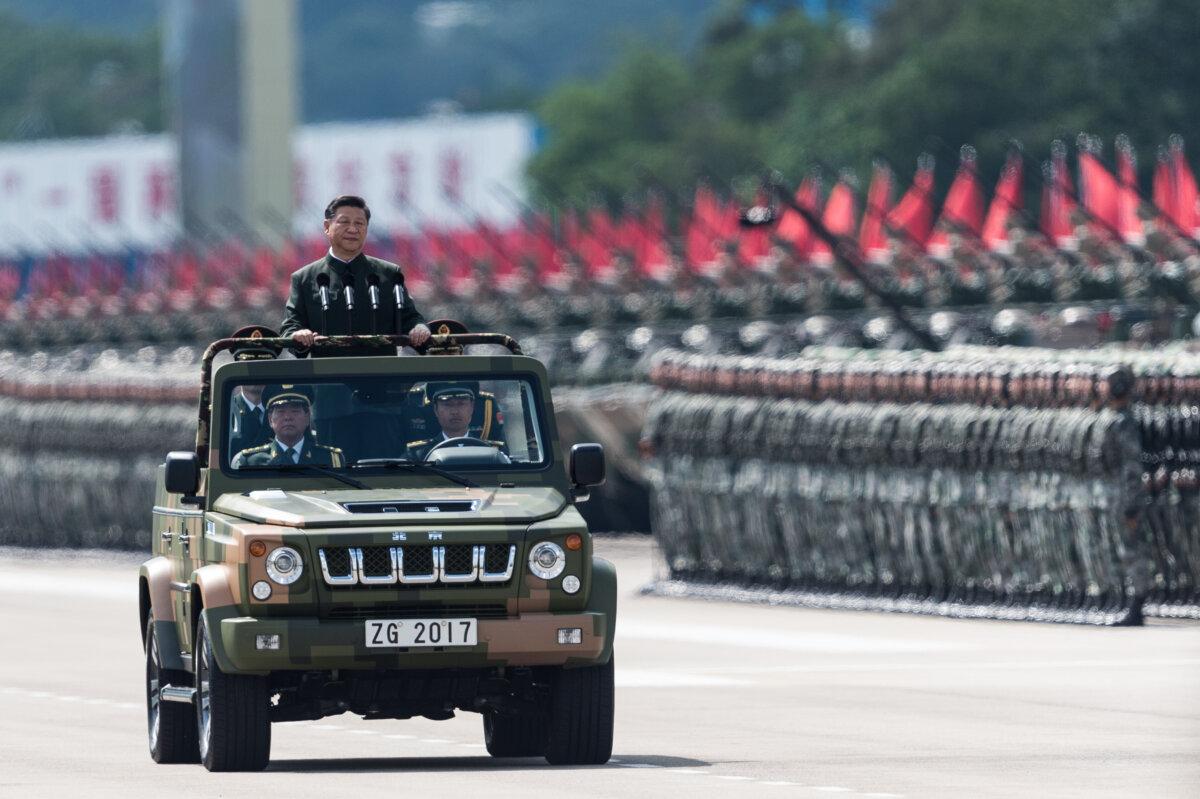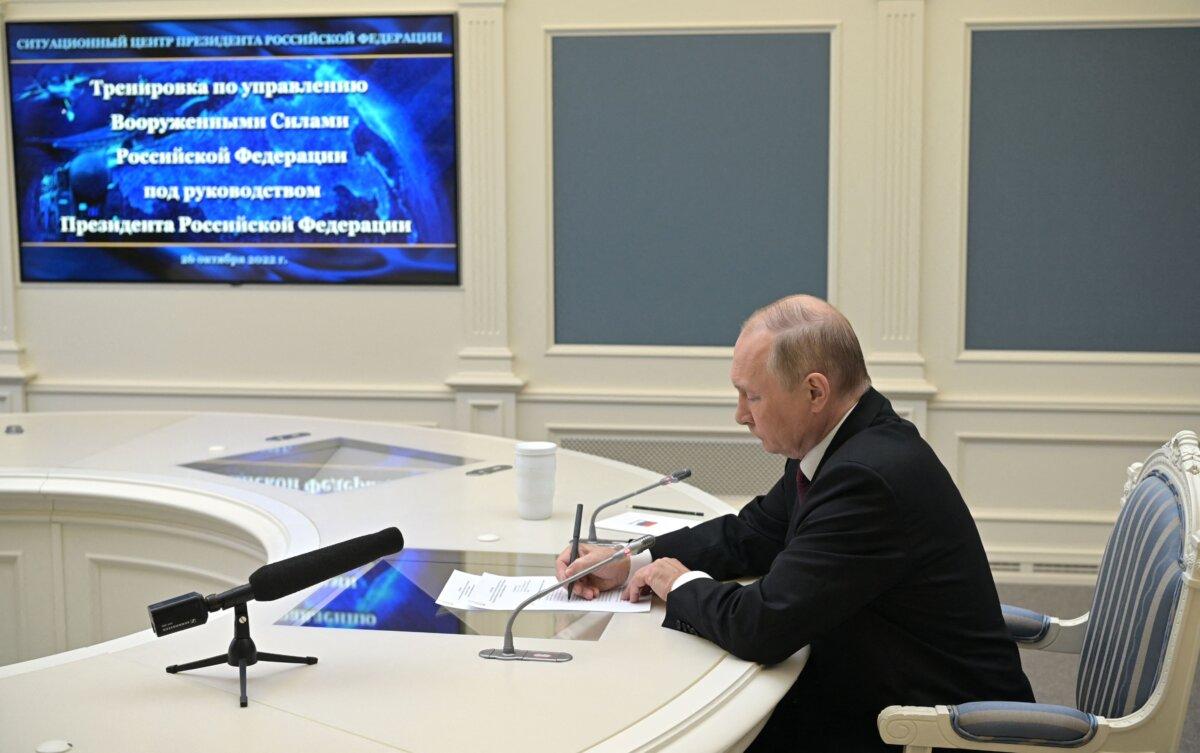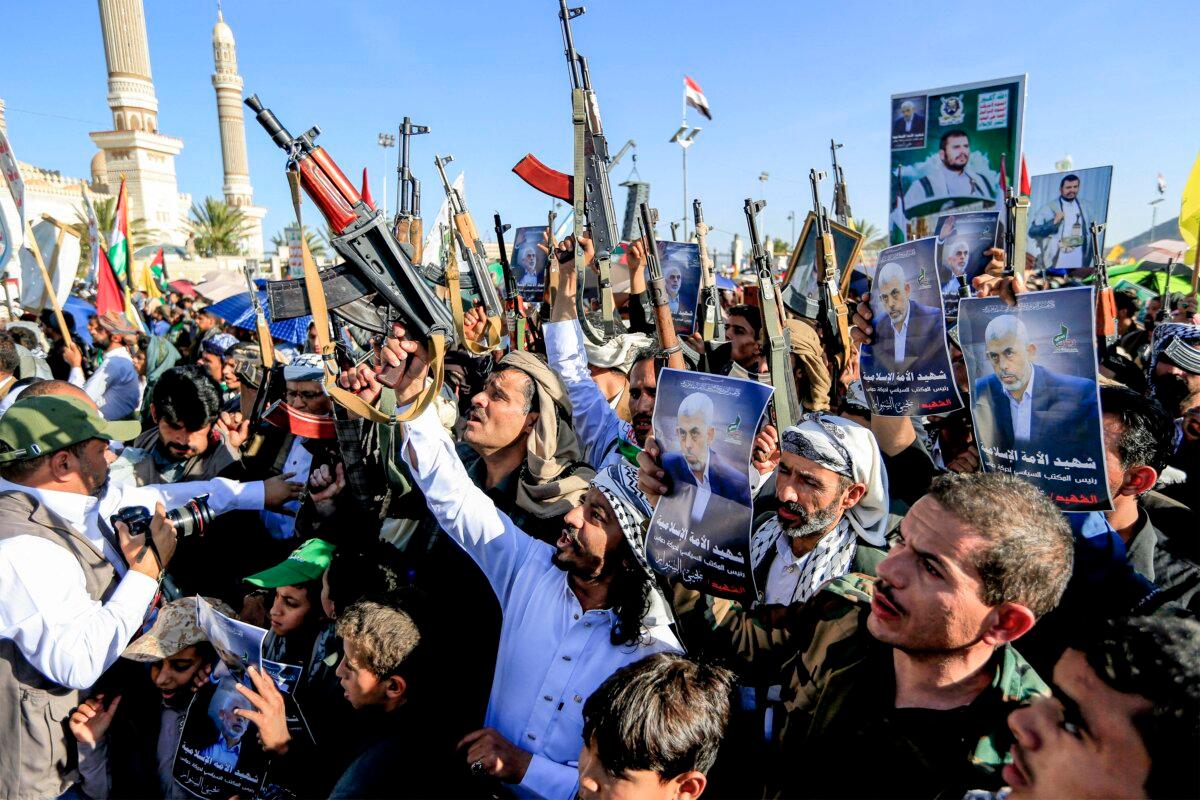Defense professionals highlight near-term threats to U.S. national security.
The United States isn’t prepared enough for a major war even as threats of one grow due to new technologies, greater access to advanced weaponry for malign actors, and heightened geopolitical tensions, defense analysts and insiders say.
Security experts have called America’s current national defense strategy, which was written in 2022, outdated and say the country is dangerously underprepared for a direct conflict involving nations with robust security forces like China and Russia.
The RAND National Security and Research Division underscored this point in a 2024 report.
It stated current threats against the United States are the “most serious and most challenging the nation has encountered since 1945 and include the potential for near-term major war.”
The report also cited expanding partnerships between China, Russia, Iran, and North Korea as part of the reason why any conflict could escalate and drag the United States into a “multitheater or global war.”
It said a conflict of such a scale isn’t sufficiently accounted for in U.S. military planning.
Compounding this is the lack of preparedness of the U.S. military noted by the Government Accountability Office (GAO).
On its website, the agency states that two decades of near-perpetual conflict have eroded the readiness of America’s armed forces.
The GAO states that the U.S. military faces imminent challenges such as equipment modernization, maintenance, realistic funding, and service member fatigue.
In 2024, the U.S. Army Training and Doctrine Command (TRADOC) updated its 10-year outlook to reflect “increasingly perilous challenges” to military readiness in large-scale combat operations.
Reasons for this include rapidly evolving technology in warfare like artificial intelligence and the systemic challenge posed by China.
The report noted China is pushing to develop a “highly modern military capable of defeating the United States regionally and eventually globally in a joint, multidomain war.”
There’s also an understanding within the U.S. military of Russia as a political powder keg that could erupt into a conflict involving large-scale combat.
Outside the existing war in Ukraine, there’s growing tension between the United States and Russia’s armed forces in the Arctic, which poses the risk of direct military conflict, according to an article published by the U.S. Naval Institute on Dec. 25.
China’s Buildup
In a 2024 report, the Center for Strategic and International Studies (CSIS) observed that China is investing in munitions and advanced warfare weaponry five to six times faster than the United States.
Beijing also has an estimated 230 times larger shipbuilding capacity.
This becomes concerning within the context of escalating military tensions in the Indo-Pacific region, particularly in the Taiwan Straight and the Korean Peninsula.
The CSIS analysis stated America currently lacks the “capacity, responsiveness, flexibility, and surge capability to meet the U.S. military’s production needs as China ramps up defense industrial production.”
The report also noted that unless “urgent changes” are made, the United States’ warfighting capabilities against countries like China will be weakened.
Enemy Within
Some defense professionals say the number of antagonistic forces already operating inside the United States isn’t something U.S. officials can afford to brush off.

“Everything that’s happened, what we’re seeing now, did not happen in a vacuum,” Anthony Mele, president of AMI Global Security, told The Epoch Times.
Mele has spent years working with the U.S. government, military, and security logistics. He said America’s growing defense obstacles are a direct result of existing policies.
Mele said a more relaxed attitude toward illegal immigration has inadvertently created an “enemy within” while giving criminal organizations and hostile nations a vast pool of sympathizers to recruit from.
“The floodgates have already been opened. We have military-aged [illegal immigrants] living here. We put them up in shelters, fed them, clothed them, and now all they need is for a van to pull up and deliver the weapons,” Mele said.
He posed the question, “Look what 19 hijackers did on 9/11. What do you think 19,000 could do?”
Nuclear Threat
In June, United Nations Secretary-General António Guterres warned of an increased risk of a nuclear conflict.
“Humanity is on a knife’s edge, the risk of a nuclear weapon being used has reached heights not seen since the Cold War. States are engaged in a qualitative arms race,” he said.
“Technologies like artificial intelligence are multiplying the danger. Nuclear blackmail has reemerged with some recklessly threatening nuclear catastrophe.”
Mele believes U.S. foreign policy is in dire need of revisions to avoid a direct conflict with another nation, especially a nuclear one.
This point was highlighted in November when outgoing President Joe Biden reportedly authorized the use of long-range U.S. missiles in Ukraine that ended with shots fired directly into Russia’s Kursk region.
Russian President Vladimir Putin’s response to the attack was to revise the country’s nuclear doctrine for faster access to nuclear weapons in the event more NATO missiles are fired into Russian territory.
Mele compared the situation to throwing firecrackers through a neighbor’s window.
“Eventually, they’ll cross the street and punch you in the face,” he said, calling the conflict between Russia and Ukraine a “World War III trip wire.”

“We have to learn to play better in the sandbox. The foreign policy of the United States is the basis of most of the problems we have today,” Mele said.
He believes there may be a chance for better foreign diplomacy in President-elect Donald Trump’s second term.
“He’s a businessman who understands how to make a deal. Nobody is going to win a nuclear war. Period,” he said.
Non-State Threats
Some experts noted that non-state actors are increasingly able to access weaponry as sophisticated as nations possess.
The expansion of criminal economies like radical terrorist groups and cartels into the traditional warfare space is a huge problem, Evan Ellis, an analyst and research professor for the U.S. Army War College, told The Epoch Times.
“The scary thing is this [war fighting] technology is really cheap for criminal groups with billions of dollars,” Ellis said.
They may even be getting closer to being able to build a nuclear weapon, he warned.
“Consider the 3D printing you have today. You used to have much more of a barrier to building a nuclear device and getting the materials to build it. That barrier is getting lower and lower.”
Mele described U.S. security threats in terms of rings, with those on the inside presenting the most immediate danger.
“What we’re finding is a couple of those outer rings are skipping ahead and getting closer due to intent,” he said. “A biological or nuclear weapon in the hands of a terrorist was an outer ring, but it’s becoming closer.”
The defining difference between criminal groups holding this technology and a hostile nation like Russia is that countries have what Ellis called “skin in the game.”
This means leaders with populations and economies to consider have a lot more to lose when using nuclear weapons than radicals.
Ellis pointed out terrorists have more to gain by scaring people through the use of nuclear technology and have, historically, demonstrated a lack of restraint in what they’re willing to sacrifice to obtain an objective.
It’s a gross misconception that people simply won’t use nuclear weapons out of fear of retaliation, he said.

“If you look at terrorism, it’s all about destabili